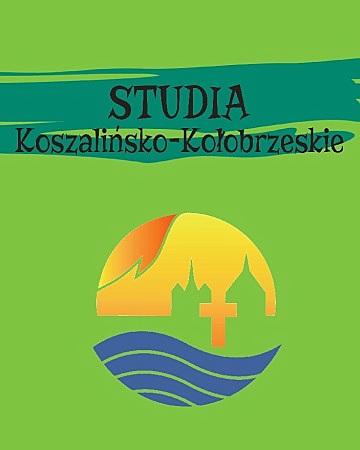
ISSN: 1230-0780
eISSN: 2719-4337
OAI
DOI: 10.18276/skk.2020.27-02





Issue archive /
nr 27 2020
Obraz świata podziemnego w świetle wybranych mitów mezopotamskich
(The image of the Netherworld world in selected Mesopotamian myths)
| Authors: |
Piotr
Goniszewski

Katedra Teologii Biblijnej i Historii Kościoła Instytutu Nauk Teologicznych Uniwersytetu Szczecińskiego |
| Keywords: | Old Testament Mesopotamia mythology the Netherworld theology of religion |
| Data publikacji całości: | 2020 |
| Page range: | 17 (31-47) |
Abstract
This article presents the ideas of the inhabitants of Mesopotamia about the Netherworld in selected myths in the Sumerian language (Descent of Inana into the Netherworld) and Akkadian (Descent of Ishtar into the Netherworld; Nergal and Ereshkigal and The Dream of Prince Kumma). The image of the land of the dead contained in the Sumerian scriptures was taken over and developed in the Akkadian tradition. According to the beliefs of the inhabitants of Mesopotamia, the place where the dead went after death was located below the surface of the earth and the ancient ocean. It resembled an ancient Sumerian city, which reflected the urban mentality of Mesopotamia. People after death lead a passive existence often compared to sleep. The same social structures as on earth were present in the land of the dead. Kings, notables, priests kept their position and their condition was slightly better than that of ordinary dead. The fate of man after death could be improved by a dignified burial and regular sacrifices. Death was an eternal condition, the only contact with the dawn of the living ensured the practice of necromancy and the fact of haunting loved ones in the event of neglect of victims. The underworld was inhabited by a huge pantheon of deities and hybrid beings, headed by a dark couple, the goddess Ereshkigal and the god Nergal. The gods of heaven and earth did not have power over this part of the cosmos, and they were also bound by the strict laws of the land of the dead.
Download file
Article file
Bibliography
| 1. | „Akkadian Dictionary”. Dostęp 19.12.2019. http://www.assyrianlanguages.org/akkadian/index_en.php. |
| 2. | Alster, Btend, ed. Death in Mesopotamia. Papers Read at the XXVI Rencontre Assyriologique Internationale. Copenhagen: Akademisk Forlag, 1980. |
| 3. | Black, Jeremy, Anthony Green. Słownik mitologii Mezopotamii. Katowice: Książnica, 1998. |
| 4. | Briks, Piotr. „Nergal i Ereszkigal – Światło w krainie mroku”. Colloquia Theologica Ottoniana 2 (2006): 87–97. |
| 5. | „Dumuzi”. W: Jeremy Black, Anthony Green, Słownik mitologii Mezopotamii, 62–63. Katowice: Książnica, 1998. |
| 6. | Drewnowska-Rymarz, Olga. „Zejście Isztar do świata podziemnego”. W: Mity akadyjskie, red. Krystyna Łyczkowska et al. Warszawa: Agape, 2008. |
| 7. | Gadotti, Alhena. Gilgamesh, Enkidu, and the Netherworld and the Sumerian Gilgamesh Cycle. Boston–Berlin: de Gruyter, 2014. |
| 8. | Gawlikowska, Krystyna. „Nergal i Ereszkigal”. W: Mity akadyjskie, red. Krystyna Łyczkowska et al. Warszawa: Agape, 2008. |
| 9. | Gawlikowska, Krystyna. „Sen księcia Kummy”. W: Mity akadyjskie, red. Krystyna Łyczkowska et al. Warszawa: Agape, 2008. |
| 10. | Hrusa, Ivan. Ancient Mesopotamian Religion. A Descriptive Introduction. Münster: Ugarit-Verlag, 2015. |
| 11. | Joannes, Francis. Historia Mezopotamii w I. tysiącleciu przed Chrystusem. Poznań: Wydawnictwo Poznańskie, 2007. |
| 12. | Johnston, Philip S. Cienie Szeolu. Śmierć i zaświaty w biblijnej tradycji żydowskiej. Kraków: Wydawnictw WAM, 2010. |
| 13. | Katz, Dina. „How Dumuzi Became Inanna’s Victim: On the Formation of «Inanna’s Descent»”. Acta Sumerica 18 (1996): 93–103. |
| 14. | Kucharski, Jacek. Spocząć ze swymi przodkami. Lublin: Redakcja Wydawnictw Katolickiego Uniwersytetu Lubelskiego, 1998. |
| 15. | Lemański, Janusz. „Hebrajski Szeol na tle wyobrażeń eschatologicznych sąsiednich kultur”. Scripta Biblica et Orientalia 3 (2011): 67–97. |
| 16. | Lemański, Janusz. „Sprawisz, abym ożył!” (Ps 71,20b). Źródła nadziei na zmartwychwstanie w Starym Testamencie. Szczecin: Wydawnictwo Naukowe Uniwersytetu Szczecińskiego, 2004. |
| 17. | Moscati, Sabation. Kultura starożytna ludów semickich. Warszawa: PWN, 1966. |
| 18. | Nicko-Stępień, Paulina. Mezopotamski świat podziemny i jego wpływ na koncepcję biblijnego Szeolu. Wrocław: TUM, 2017. |
| 19. | Rechet, Guy. Słownik cywilizacji Egiptu. Katowice: Książnica, 2006. |
| 20. | Roux, Georges. Mezopotamia. Warszawa: Dialog, 2006. |
| 21. | Sandowicz, Małgorzata. „Rytuały przeciwko duchom zmarłych”. W: Do Boga, Pana mego, mów! Babilońskie i asyryjskie hymny, modlitwy, zaklęcia i rytuały, red. Olga Drewnowska-Rymarz i in. Warszawa: Agade, 2005. |
| 22. | Sarzyńska, Krystyna. Mity sumeryjskie. Warszawa: Agade, 2000. |
| 23. | Van De Mieroop, Marc. Historia starożytnego Bliskiego Wschodu. Ok. 3000–323 p.n.e. Kraków: Wydawnictwo Uniwersytetu Jagiellońskiego, 2008. |